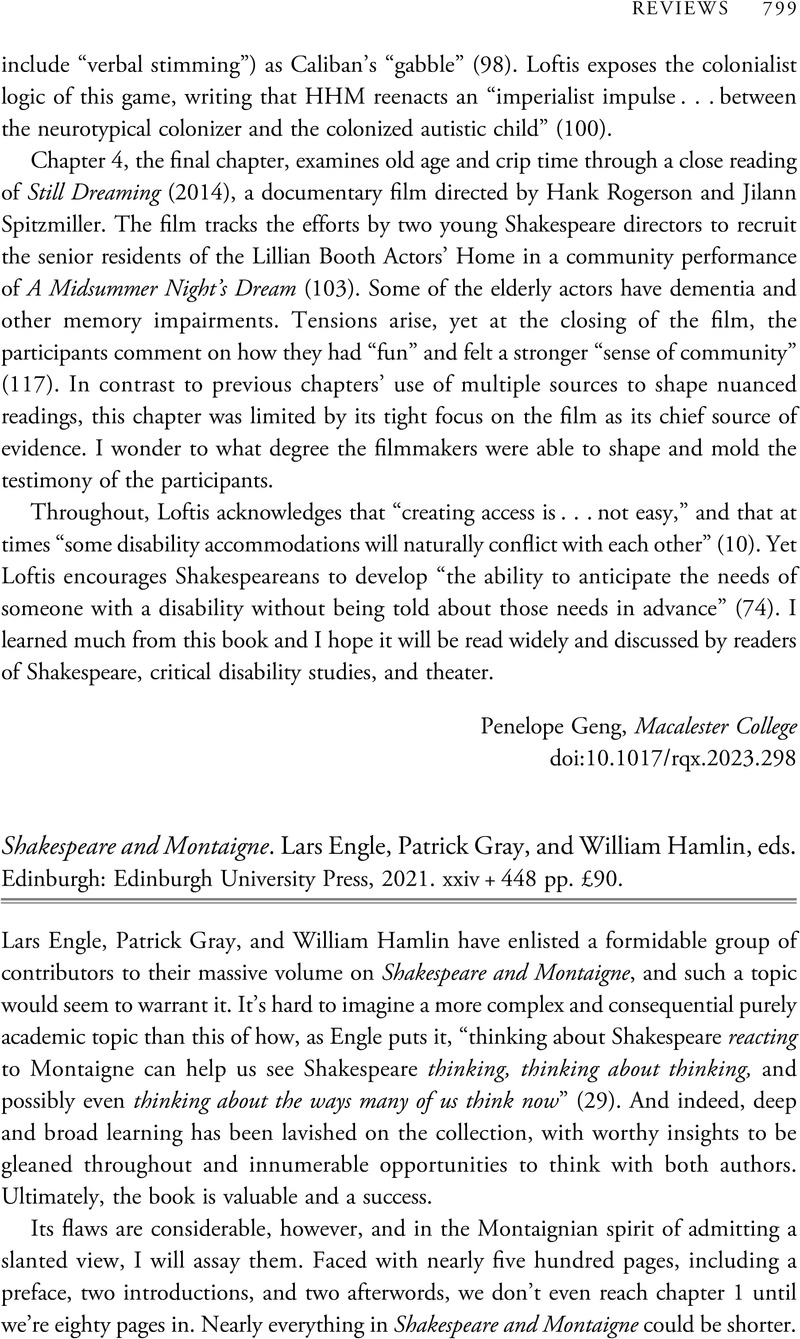No CrossRef data available.
Article contents
Shakespeare and Montaigne. Lars Engle, Patrick Gray, and William Hamlin, eds. Edinburgh: Edinburgh University Press, 2021. xxiv + 448 pp. £90.
Review products
Shakespeare and Montaigne. Lars Engle, Patrick Gray, and William Hamlin, eds. Edinburgh: Edinburgh University Press, 2021. xxiv + 448 pp. £90.
Published online by Cambridge University Press: 25 July 2023
Abstract
An abstract is not available for this content so a preview has been provided. Please use the Get access link above for information on how to access this content.

- Type
- Review
- Information
- Copyright
- Copyright © The Author(s), 2023. Published by the Renaissance Society of America



